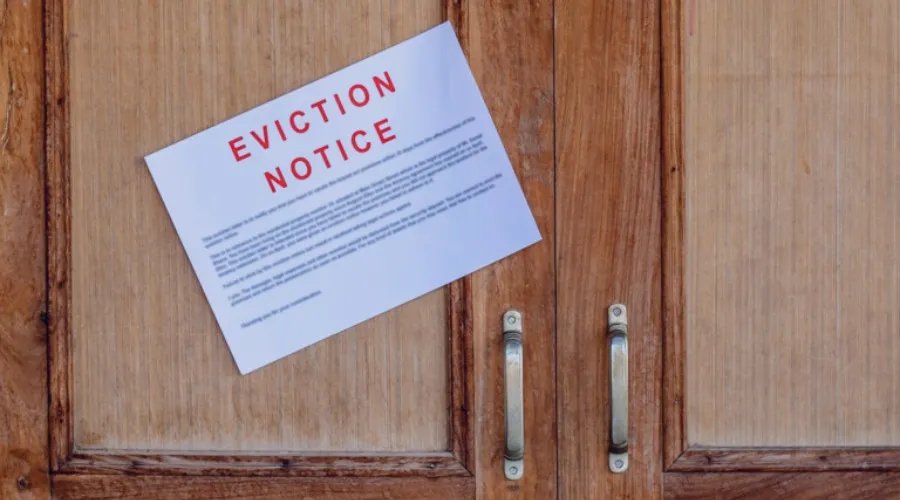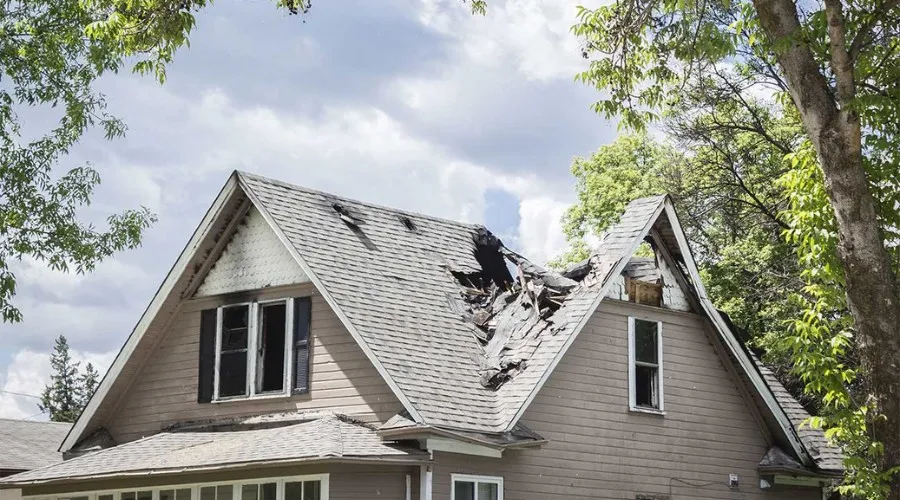The eviction process in Maine doesn’t have to be overwhelming. Whether it’s handling notices, court filings, or understanding your legal rights, following the right steps is key to avoiding delays and extra costs. With LeaseRunner guidance, landlords can navigate the process smoothly, stay compliant, and protect their rental property.
Highlights of Eviction Laws in Maine (2025)
Understanding Maine’s updated landlord-tenant regulations is key to avoiding legal issues and ensuring a smooth rental process. Below are the most important changes taking effect in 2025 that both landlords and tenants should know. These updates also influence how the eviction process in Maine works in practice.
Total price disclosure and fee limits
Effective January 1, 2025, Maine Public Law Chapter 594 (HP 945 – LD 1490) sets strict limits on what landlords can collect at lease signing. These allowable charges include:
- First month’s rent.
- A security deposit of no more than two months’ rent.
- Any recurring fees that are clearly disclosed in writing.
In addition, landlords must provide written disclosures on critical topics such as lead-based paint hazards, radon levels, smoking policy, bedbug history, property energy efficiency, common area electricity charges, and the exact location of the tenant’s security deposit.
Late fees are only permitted if rent payments are more than 15 days overdue. This law aims to promote pricing transparency and protect tenants from excessive or hidden charges—helping to prevent disputes that may later escalate into the eviction process in Maine.
Eviction Prevention Programs
To reduce the risk of unnecessary displacement, Maine has launched a statewide Eviction Prevention Program (EPP) funded with a one-time $18 million allocation. Managed by the Quality Housing Coalition (QHC) under Maine Housing, this initiative focuses on helping households that are:
- Under a court-ordered Forcible Entry and Detainer notice for nonpayment of rent.
- In receipt of an official Notice to Quit.
By offering targeted financial and housing support, the EPP works to stabilize vulnerable renters and prevent avoidable evictions across Maine, which in turn helps reduce the need for landlords to enter the formal eviction process in Maine.
Legal Reasons for Eviction in Maine
Understanding the grounds for eviction in Maine is essential for both landlords and tenants. State law outlines specific legal reasons a landlord can remove a tenant, each with its own notice requirements and timelines. Below are the most common situations where an eviction may legally proceed.
Nonpayment of rent
One of the leading causes of eviction in Maine is failure to pay rent on time. Under Maine law, rent becomes officially “late” if it’s unpaid for 15 days past the due date—unless the lease agreement allows a longer grace period.
If a tenant falls behind on rent, the landlord must first serve a 7-Day Notice to Pay or Quit. This notice gives the tenant seven days to either pay the overdue amount in full or move out to avoid the eviction process in Maine.
For tenants at will, paying all rent within the seven-day window will stop the eviction entirely. Tenants with a written lease must follow the notice requirements outlined in that lease; if none are stated, the 7-Day Notice still applies.
Lease or rental agreement violations
Every Maine lease agreement sets rules that both the landlord and tenant must follow. If the tenant breaks these terms—such as causing damage beyond normal wear and tear—the landlord can issue a 7-Day Notice to Quit.
Common lease violations include:
- Property damage beyond normal wear and tear
- Smoking in prohibited areas
- Overcrowding the unit
- Keeping pets in a no-pet rental property
If the tenant does not move out by the deadline, the landlord may file an eviction case in court.

Health and safety code violations
Maine law strictly enforces health, safety, and building codes. If a tenant’s actions create dangerous or unsanitary conditions, the landlord can serve a 7-Day Notice to Quit detailing the specific violation.
Examples include:
- Accumulating garbage that attracts pests
- Damaging electrical systems or plumbing
- Creating hazardous living conditions
Tenants must move out by the end of the notice period, or the landlord can proceed with a court-ordered eviction.
Illegal activity on the premises
Engaging in illegal activity within the rental unit or on the property is a serious violation. In cases involving squatters, landlords should also review Maine squatter rights to understand the correct legal procedure.
The landlord can give a 7-Day Notice to Quit—or follow the lease’s required notice period—before filing for eviction.
Illegal activities may include:
- Prostitution or related offenses
- Violence, assault, or threats to others
- Domestic violence or sexual assault
- Possession, manufacture, or sale of controlled substances
Non-renewal after lease expiration
Maine does not allow landlords to evict tenants without legal cause during a lease term. However, once the lease ends, landlords can choose not to renew. If the tenant remains even one day past the lease end date, the landlord may serve a 30-Day Notice to Quit (or another period required by law).
If the tenant stays after the notice period ends, the landlord can file for eviction to regain possession of the property.

Serving an Eviction Notice in Maine
Before starting the eviction process, landlords must follow state-specific requirements under MRSA Title 14. Using an eviction check can help ensure your notice meets legal standards.
Types of eviction notices in Maine
Maine law recognizes different notices based on the cause for eviction:
- 7-day notice to pay or quit: Used for nonpayment of rent, giving tenants seven days to pay the full balance or move out.
- 7-day notice to cure or quit: Issued for lease violations, such as keeping unauthorized pets, causing excessive noise, or other breaches. Tenants have seven days to fix the issue or vacate.
- 7-day notice to quit: For serious situations like significant property damage, illegal drug activity, or violent behavior. Depending on the case, tenants may or may not get an opportunity to cure.
- 30-day notice: Typically for ending a tenancy-at-will or a lease that has expired, unless the written lease specifies a different requirement.
These timeframes are strict; failure to follow them can result in the eviction being thrown out in court.
Approved methods for serving an eviction notice
Under Maine eviction laws, a landlord may serve a notice in one of the following ways:
- Personal delivery: Hand the notice directly to the tenant.
- Substituted service: Leave the notice with someone of suitable age and discretion at the tenant’s residence, then mail a copy via first-class mail.
- Posting and mailing: If the tenant is not present may attach the notice to a clearly visible location at the front door, and then send a copy by first-class mail to the tenant’s last known address.
Each notice must clearly state the eviction reason, the deadline to comply, and the landlord’s intent to file for eviction if the tenant fails to meet the terms.

Legal requirements and Tenant protections
Eviction notices in Maine must be in writing and comply with state law regarding format, timelines, and clarity. Landlords are prohibited from “self-help” evictions, such as changing the locks, removing belongings, or shutting off utilities — all of which are illegal.
Tenants are protected against retaliatory evictions for exercising their legal rights, such as reporting unsafe conditions to local authorities. If a landlord engages in an illegal eviction, tenants may sue for damages of $250 or actual losses (whichever is greater), plus attorney’s fees.
Step-by-Step Eviction Process in Maine
If you’re a landlord in Maine, following the correct eviction process in Maine is critical to stay compliant with landlord-tenant law and avoid costly delays. Below is a clear, updated guide based on the Maine Revised Statutes Annotated (MRSA) Title 14 and current court procedures.
Step 1 – Serve the proper eviction notice
Under MRSA Title 14, §§ 6000–6016-A, the type of notice depends on the reason for eviction:
- Nonpayment of rent – 7-Day Notice to Pay or Quit (must state the exact amount owed and statutory language allowing payment within 7 days).
- Lease violations, property damage, or illegal activity – 7-Day Notice to Quit.
- Ending a tenancy-at-will or lease expiration – 30-Day Notice.
The notice must include the reason, the compliance deadline, and a statement that legal action will follow if the tenant does not comply. Service must follow legal requirements:
- Attempt personal delivery (at least three times).
- If unsuccessful, post the notice at the property and mail it via first-class mail.
Step 2 – File an eviction complaint in the county court
If the tenant fails to comply, the landlord files a Complaint for Forcible Entry and Detainer in the District Court of the county where the property is located.
- Court filing fee: $100
- Average total cost with service fees: About $172
The complaint should clearly state the eviction reason and include supporting evidence like the lease agreement and the eviction notice.
Step 3 – Serve summons & complaint
After filing, the court issues a summons. The landlord must legally serve both the summons and complaint to the tenant via:
- Sheriff or process server (preferred)
- Substituted service (with a suitable person at the premises and mailing)
- Posting at the rental and mailing via first-class mail if personal service fails
A proof of service affidavit must be filed with the court.
Step 4 – Tenant’s response period or default judgment
The tenant has seven days after receiving the summons to file a written answer with the court. Common defenses include:
- Rent was paid in full
- Lease violation was cured
- Retaliatory eviction claim
- Unsafe or uninhabitable housing conditions
If the tenant fails to respond or appear in court, the landlord can request a default judgment.
Step 5 – Court hearing: what to expect
If the tenant responds, the court schedules a hearing-usually 7 to 14 days after service of the summons.
Both sides may present:
- Lease agreements
- Payment receipts
- Photos or videos
- Witness testimony
The judge will determine whether the eviction reason is valid under Maine eviction laws and if the tenant violated the lease.
Step 6 – Obtain a final judgment & Writ of Possession
If the landlord prevails in court, a final judgment will be issued. After a mandatory seven-day waiting period, the landlord may request a Writ of Possession, giving the tenant 48 hours to vacate the property. If the tenant remains past this deadline, the sheriff is authorized to carry out the eviction, with an enforcement fee of approximately $40.
Step 7 – Sheriff Lockout + post-writ vacate period
If the tenant does not vacate within the 48-hour deadline stated in the Writ of Possession, the sheriff will carry out a lockout and remove the tenant’s belongings from the premises. Under Maine law, the landlord must store the tenant’s property for a minimum of 14 days and send a written notice via first-class mail informing the tenant of the storage location. If the tenant fails to claim their belongings within that period, the landlord is permitted to dispose of them in accordance with state regulations.
Eviction Timeline and Estimated Costs in Maine
The table below combines the average timeline and estimated costs for each stage of the eviction process in Maine. Figures are based on state civil procedures and industry data, but actual expenses and duration can vary depending on the case complexity, court workload, and whether the tenant contests the eviction.
So in summary:
- Average Total Timeline: 3 weeks to 2 months (longer for 30-day notices or contested cases)
- Average Total Cost: Typically $200–$300 for filing and service fees, excluding legal fees, lost rent, and turnover costs.
Key Documents to Prepare Before Filing Eviction in Maine
Before filing an eviction case in Maine, landlords must gather strong, well-organized documentation to comply with Maine eviction laws and improve their chances of winning in court. The following records are essential to prove the tenant’s lease obligations, violations, and payment history.
1. Lease agreement
The lease agreement serves as the foundation of your case. It outlines the rental terms, including monthly rent amount, payment deadlines, property use rules, and any termination or eviction clauses. Make sure the lease is signed by both landlord and tenant, with any amendments or addendums attached. In court, this document helps prove tenant obligations and identify breaches, such as nonpayment of rent or other lease violations.

2. Eviction notice
Maine law, under MRSA Title 14, §§ 6000-6016-A, requires landlords to serve the proper eviction notice before filing in court. The type of notice depends on the eviction reason:
- 7-day notice to pay or quit – for nonpayment of rent.
- 7-day notice to cure or quit – for curable lease violations.
- 7-day notice to quit – for severe property damage or illegal activity.
- 30-day notice – for lease expiration or tenancy-at-will terminations.
Each notice must clearly state the violation, compliance deadline, and proof of service method.
3. Proof of service of eviction notice
Courts require evidence that the eviction notice was served according to Maine law. Accepted methods include personal delivery, substituted service (leaving it with a suitable person and mailing), or posting on the property and mailing via first-class mail. Keep documents like a process server’s affidavit, postal receipts, or a signed acknowledgment from the tenant to confirm legal service compliance.
4. Tenant payment history
For nonpayment cases, a detailed payment ledger is critical. Include dates, amounts of rent paid, missed payments, and partial payments. Supporting documents may include bank statements, rent receipts, or accounting software records. This proves the rent owed and backs up your claim in court.
5. Documentation of lease violations
When evicting for lease violations, collect clear evidence of the breach—such as photos of unauthorized pets, property damage, or noise complaints. Police reports, witness statements, or neighbor complaints can also help, especially in cases involving illegal activity. Be sure the evidence directly connects to the violated lease clause.

6. Written communications with Tenant
Gather all communications related to the eviction issue, such as emails, text messages, or letters. These may include late rent reminders, lease violation warnings, or responses to tenant complaints. Keeping a communication record shows you made good-faith efforts to resolve the problem before going to court, helping defend against claims of retaliatory eviction.
Common Mistakes Landlords in Maine Should Avoid
Even experienced landlords in Maine can run into trouble if they overlook key legal requirements in the eviction process. Below are common pitfalls—and how to avoid them—so your case stands up in court and complies with state law.
1. Failing to serve a proper eviction notice
In Maine, eviction notices must strictly follow the Maine Revised Statutes Annotated (MRSA) Title 14, §§ 6000–6016-A. This means choosing the correct notice type—such as a 7-Day Notice to Pay or Quit for nonpayment or a 30-Day Notice for a tenancy-at-will.
Your notice must clearly state the violation, give the required compliance period, and be served using an approved method like personal delivery, substituted service, or posting and mailing. Serving the wrong notice or delivering it improperly can invalidate your case, causing costly delays in the Maine eviction process.
2. Attempting illegal “self-help” evictions
Maine landlord-tenant law strictly bans self-help eviction tactics. Actions like changing the locks, shutting off heat or water, or removing a tenant’s possessions without a court order are illegal. Such conduct can lead to tenant lawsuits, with damages of at least $250 or actual losses, plus attorney fees. Always follow the lawful eviction steps, including obtaining a Writ of Possession, to protect yourself from liability.

3. Poor documentation of lease violations
Without strong evidence, an eviction case can quickly fall apart. Keep detailed records of all lease violations—whether it’s unpaid rent, property damage, or disruptive behavior. Maintain payment histories, written notices, photographs, and even neighbor complaints. Using digital property management tools like LeaseRunner can help store leases, eviction notices, and communication logs, making it easier to present proof in court.
4. Overlooking Maine’s retaliatory eviction protections
Maine law shields tenants from being evicted in retaliation for exercising legal rights, such as reporting unsafe housing conditions or requesting repairs. If you file for eviction soon after such actions, the court may dismiss your case or allow tenants to file counterclaims. To avoid this, base every eviction on documented, valid reasons—and ensure your timing cannot be seen as retaliatory.
5. Ignoring post-eviction storage rules
After a sheriff enforces the eviction, Maine law requires landlords to store the tenant’s belongings for at least seven days. You must also notify the tenant via first-class mail about where their items are stored. Failure to follow these rules can result in legal penalties. Tracking these steps with services like LeaseRunner ensures compliance and prevents expensive mistakes.
Conclusion
The eviction process in Maine can be complex, so consulting an eviction attorney is often the safest approach. While state laws outline clear steps, local municipalities may have additional rules. By understanding both state and local requirements, landlords can handle evictions legally, efficiently, and with confidence.
FAQs
Can a landlord evict a tenant in Maine during winter?
Many people believe winter brings a pause to evictions, but that’s not the case in Maine. The eviction process in Maine applies year-round, including the coldest months. While landlords must still follow every legal requirement—such as serving proper notices and obtaining a court order—there’s no seasonal exemption from the law.
How to evict a tenant without a lease in Maine?
If a renter lives on the property without a formal lease—known legally as a “tenant at will”—the landlord must serve a written notice to quit that meets the notice period required by Maine law. After the notice expires, the remaining steps align with the standard eviction process in Maine, including filing in court and securing a judgment before regaining possession.
Typical costs of the eviction process in Maine?
Evicting a tenant isn’t free. Landlords can expect to pay court filing fees, process service fees, and possibly attorney’s fees if legal representation is used. These costs can add up, especially if the case involves disputes or appeals, so budgeting for the eviction process in Maine is important before taking action.



